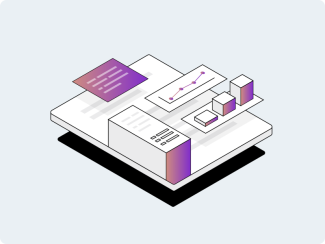

Market Ancillary Services and Small Generation Aggregators – Rule Change
The landscape of the energy industry is experiencing rapid changes as work continues towards achieving Australia’s renewable energy targets. The Australian Energy Market Commission (AEMC) has finalised a rule change that will facilitate this transition by integrating energy storage and hybrid systems into the National Electricity Market (NEM) and the first changes have just come into effect.
|
AT A GLANCE |
COMPLETE! 31 March 2023: Aggregators of small generating and storage units may choose to provide market ancillary services
|
|
COMPLETE! 9 August 2023: Hybrid systems may use aggregate dispatch conformance |
|
|
COMPLETE! 3 June 2024: Final rule implementation and introduction of the Integrated Resource Provider participant category |
Bi-directional flow? Hybrid systems?
In times past, energy usually flowed in one direction – a generator would create energy, or a load would consume energy. The advent of renewable generation, improvements to existing technologies and the introduction of large-capacity energy storage systems has changed the way we think about energy, and the regulation framework is evolving to support the future market.
Units with bi-directional flows are units capable of both generating energy and consuming energy. While not limited to storage, this term does include batteries – typically batteries do not ‘create’ energy, but the discharge of energy stored in a battery is still categorised as generation.
Hybrid systems are systems in which multiple types of generation, batteries or load exist behind the same power grid connection point. For example, a hybrid system may include solar generation and a battery behind a single connection point, or a combination wind and solar farm. This term refers to grid-scale facilities and not to small customers with solar panels and batteries, or the aggregation of those customers (such as in a virtual power plant).
In order to buy and sell energy into the NEM, registration is required as a market participant. There are different registration categories, and which category might be required is dependent on the intended activities in the NEM. At the moment without the rule changes determined by the AEMC, hybrid systems have to register as several different kinds of market participant categories in order to participate in the NEM which can be a complex process.
What’s changing?
This rule change – called the Integrating Energy Storage Systems (IESS) rule change – focuses on introducing flexibility into the National Electricity Rules by creating a new registration category for bi-directional facilities. The rule change should reduce barriers to entry for bi-directional facilities, enabling greater market participation and facilitating innovation while protecting consumers and maintaining and improving energy reliability and system security.
Some things have already changed
On 31 March 2023, an interim rule came into effect that made a few changes in preparation for the full rule implementation next year.
Small Generation Aggregators may now choose to provide contingency market ancillary services.
Small Generation Aggregators are market participants that supply energy aggregated from multiple generation sources. These generation sources must be exempt from registering as a generator and are usually under 5MW each.
Ancillary services assist with stabilising power supply by ensuring that power loads, voltages and frequency are maintained within acceptable ranges. These services are vital to the continued reliability and security of the NEM, and the Australian Energy Market Operator’s (AEMO) most recent Quarterly Energy Dynamics report shows that batteries now lead the ancillary services market share at 38% of the market1 – and that figure is expected to grow.
Before this change, aggregated small generation units were unable to participate in any ancillary markets. This move is in preparation for the retirement of the Small Generation Aggregator participant category next year – discussed below. Allowing aggregated small generation, which often includes bi-directional units and storage, like batteries, will boost system stability and has facilitated the introduction of fast frequency response ancillary services on 9 October 20232.
The interim rule change has also adjusted how hybrid systems may be managed in AEMO’s dispatch processes. As of 9 August 2023, when registering as a market participant, eligible hybrid systems may choose to be managed as a whole system through the dispatch process, which means that the system’s conformance compliance requirements would be for the whole hybrid system. Previously, conformance requirements were set for individual generation and loads (for example, conformance requirements were different for solar generation and wind generation in a hybrid system, even at the same connection point in the power grid).
Coming soon
Full implementation of the IESS rule change will commence on 3 June 2024 and will include the introduction of the much-anticipated Integrated Resource Provider (IRP) market registration category. The IRP category will provide hybrid systems and bi-directional units with a fit-for-purpose market registration category that accommodates different generation capabilities and bi-directional flows.
The rule change is also impacting the Small Generation Aggregator registration category. From mid-2024, all market participants registered as Small Generation Aggregators will be transferred to the IRP registration and will be given the label of Small Resource Aggregator. This is the mechanism that has allowed for Small Generation Aggregators to participate in ancillary services.
Some registered market participants must report to AEMO about scheduled generation or consumption of energy. This allows logistical planning of energy flows through the NEM and energy dispatching processes. The IESS rule will address some of the barriers innovative systems have been facing, including clearer obligations for the scheduling of generation and load of hybrid systems and allowing eligible hybrid systems to choose scheduling classifications that best suit the system.
Where can I learn more?
If you want to understand more about how this rule change or other upcoming updates might impact your project, contact us or ask your regulatory question through our portal.
1 AEMO, January 2023, Quarterly Energy Dynamics Q4 2022, p. 34
2 See the AEMC’s Fast frequency response market ancillary service rule change for more information.
